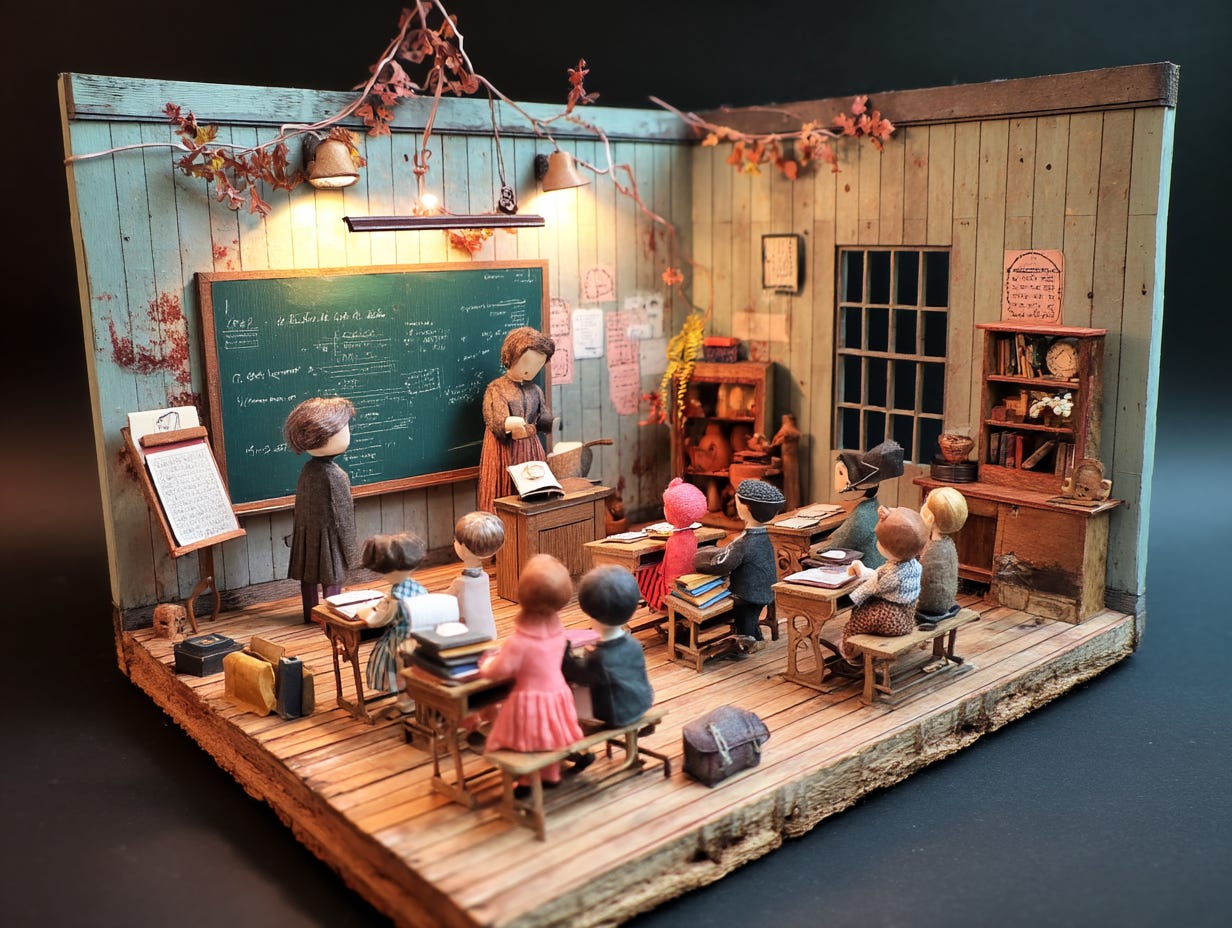3 Types of Scaffolding for Student Success
Different ways to scaffold to support your students' learning.
The secret to helping English learners thrive isn’t harder lessons - it’s smarter scaffolds.
When your students struggle, it’s rarely because they’re lazy or unmotivated. Often, it’s because they need better bridges between what they know and what they’re trying to learn.
In this article, I’ll show you a simple, three-part scaffolding framework that you can plug straight into your lessons - and help your students grow faster with less stress.
What is scaffolding?
Scaffolding is a temporary support that helps learners tackle skills they can't yet do independently.
Think of it like a climbing wall: students can reach much higher if there’s a strong rope, clear holds, and someone belaying from below.
Over time, as students get stronger, the support fades and automaticity takes over.
Why scaffolding is essential
Scaffolding lightens the cognitive load. It stops students from getting overwhelmed, frustrated, or giving up.
Research shows that effective scaffolds can boost both language development and subject learning by up to 30%.
I’ve seen it happen when a reading lesson that bombed one week turned into a lively discussion the next - just because I added two simple scaffolds.
Meet the three forms of scaffolding
You don’t need a million techniques. Just focus on these three types:
1. Sensory Scaffolds: Connect learning to the five senses
Use objects, actions, pictures, demonstrations.
Example: I once used Lego bricks to model how to build a strong paragraph - topic sentence, supporting details, concluding sentence. Students got it instantly.
2. Interactive Scaffolds: Learn through conversation
Use pairwork, group roles, home-language bridges, buddy systems.
Example: In a station rotation, my students worked in triads - each student becoming the “mini-teacher” for one station. Peer teaching built confidence and language faster than lectures ever could.
3. Graphic Scaffolds: Make thinking visible
Use charts, diagrams, number lines, organisers.
Example: For a tricky reading, we built a giant mind map together. It turned dense text into a clear visual roadmap, and students later said it was their favourite part.
Why scaffolding can feel hard (it’s not your fault)
Maybe you worry that scaffolding will ‘baby’ your students.
Or maybe you feel like you don’t have time to add extra layers to your lesson.
But the truth is, scaffolding isn’t lowering standards, but building a ladder to high standards.
And once you have a simple plan, it actually saves time because students ‘get it’ faster.
How to build a scaffolded lesson (step-by-step)
Find the sticking point - what’s the hardest skill or concept today?
Pick one tool from each category - sensory, interactive, graphic.
Model first - show exactly what success looks like.
Practice together - guide students through it.
Practice alone - let them try independently.
Reflect - ask: “Which support helped you most?”
Bit by bit, reduce the scaffolds as students show they’re ready.
Let AI help you (seriously!)
ChatGPT can help create all three.
Picture sets for sensory scaffolds
Dialogue scripts for interactive scaffolds
Mind-map templates for graphic scaffolds
Quick example prompt you can try:
"Create a simple mind map for a lesson about travel for intermediate English learners."
Top tips and caveats
One scaffold per type is enough. Don’t overload students.
Always link scaffold removal to real mastery. If they’re ready, pull the support away.
Collect feedback. Ask students, “What helped you most today?”
Final takeaway
Scaffolding isn’t an add-on - it’s how learning actually happens.
One small tweak each lesson builds a powerful cumulative effect.
Your students will become more confident, independent learners and you’ll save yourself a lot of frustration.
Ready for a challenge?
In your next lesson, try using:
One sensory scaffold
One interactive scaffold
One graphic scaffold
Then tell me how it went, I’d love to hear your wins (and struggles)!
If you liked this article, you’ll love my books:
📝 Lesson Planning for Language Teachers - Plan better, faster, and stress-free.
👩🎓 Essential Classroom Management - Develop calm students and a classroom full of learning.
🏰 Storytelling for Language Teachers - Use the power of storytelling to transform your lessons.
🤖 ChatGPT for Language Teachers - A collection of AI prompts and techniques to work better, faster.
💭 Reflective Teaching Practice Journal - Improve your teaching in five minutes daily.



